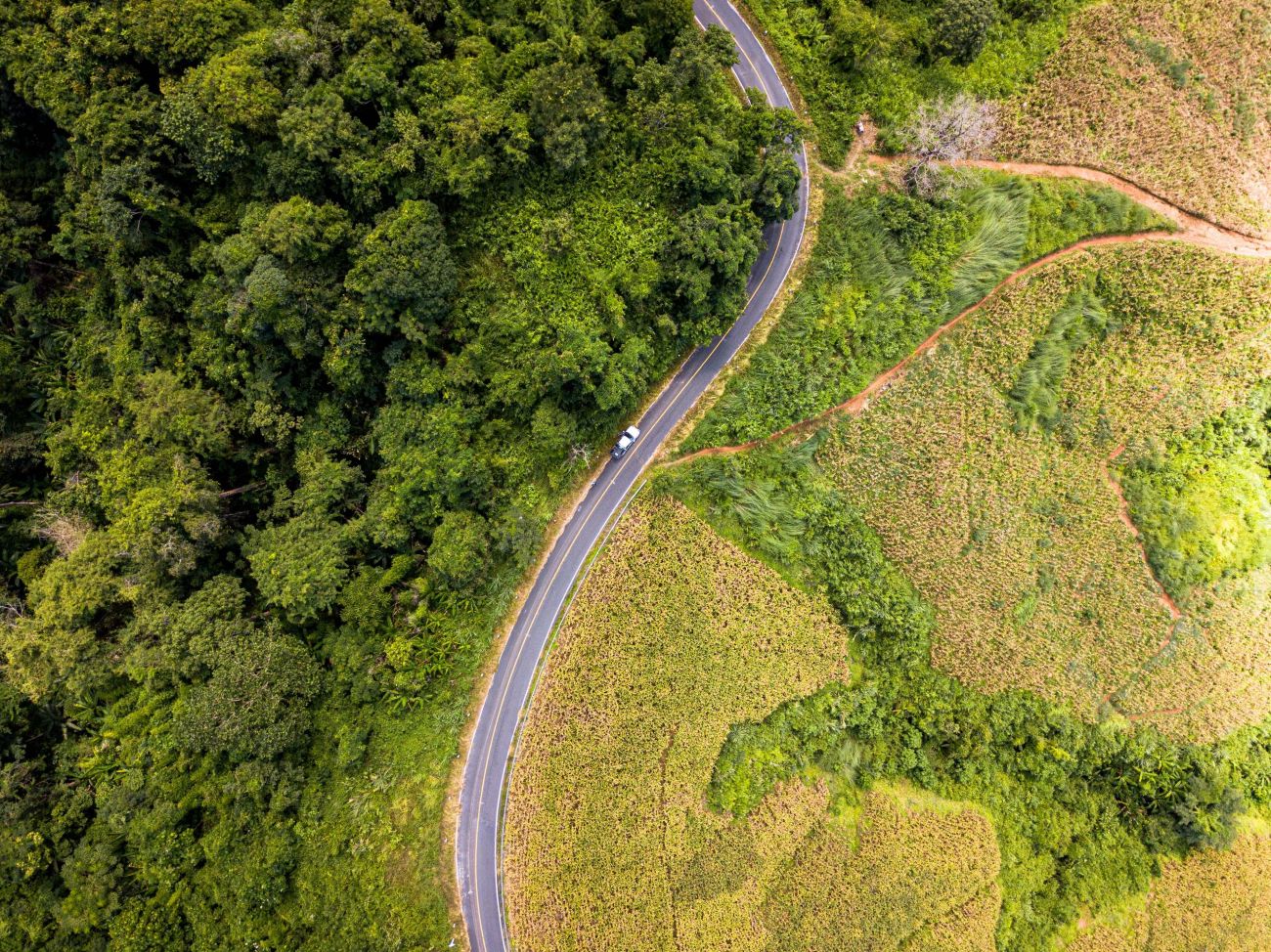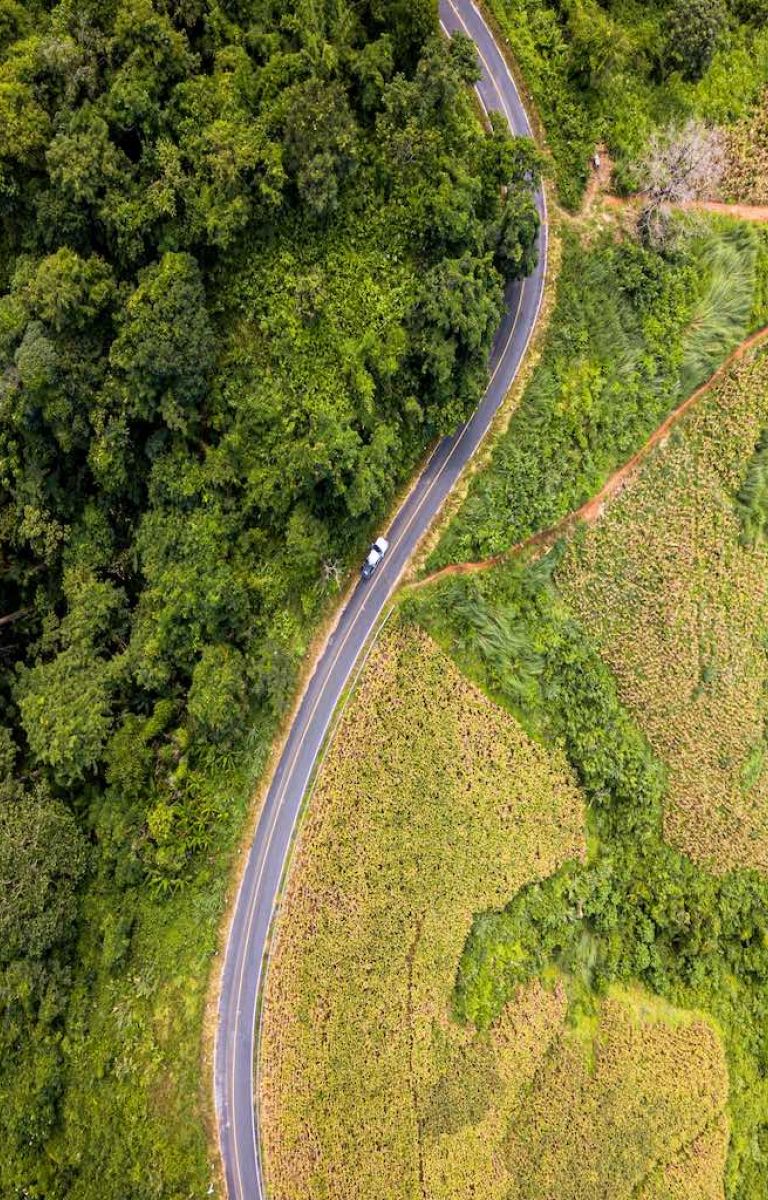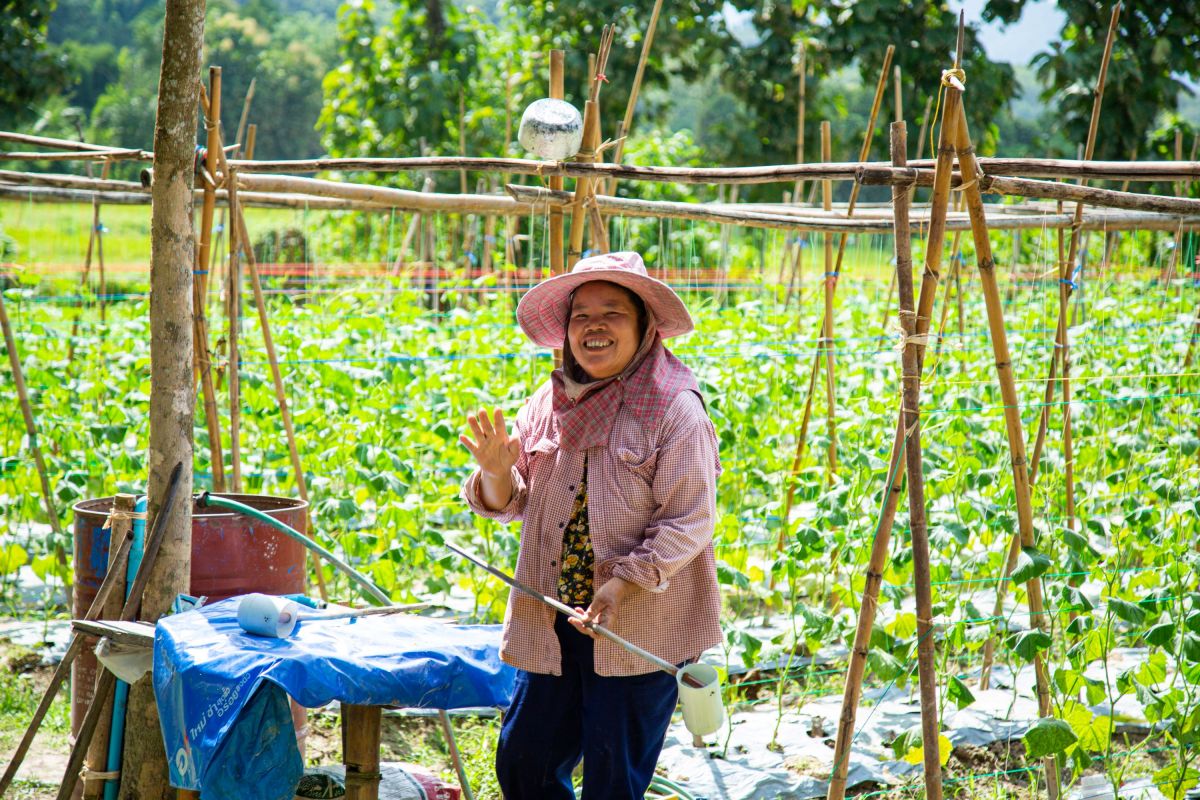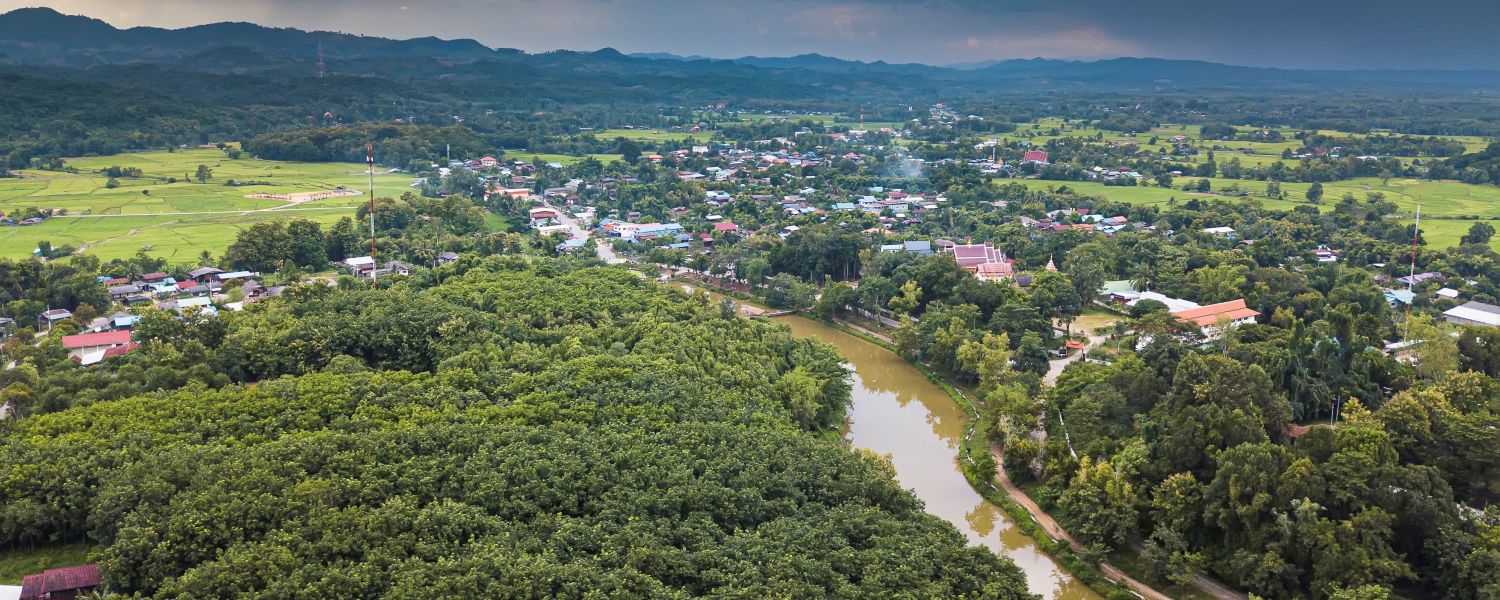

The Nan landscape in Thailand is home to a forest ecosystem of vital importance to the country’s largest watershed, the Chao Phraya. In the Nan landscape, forested mountains surround river valleys that support extensive agricultural systems. Stretched across 1.2 million hectares, the Nan contains the Nan River, a principal tributary of the Chao Phraya River contributing 40 percent of its flow. The Chao Phraya supports the rich agriculture of central Thailand and the livelihoods of the urban delta communities, such as Bangkok, the capital. Due to agricultural land conversion in the Nan landscape, soil and sediments released into the river threaten the health of this ecosystem. Investments in sustainable forest management and agroforestry in Nan Province are crucial to protecting the Nan and Chao Phraya watersheds. The 480,000 people living in Nan Province include seven ethnic minorities. Securing their rights will enable them to generate incomes from agriculture and protect the ecosystem creating benefits for all of Thailand.

Nan by numbers
-
Total area of landscape: 1,200,000 hectares
-
Forest cover: 61.45 percent
-
Population: 480,000
-
Poverty rate: 21 percent

Entry points for investment to achieve the SDGs
-
Formalizing local communities' rights to manage forests
-
Fostering multi-stakeholder participation in establishing zones and guidelines for sustainable management of natural resources
-
Supporting development of inclusive forest-based business opportunities for women and other marginalized groups
The Nan landscape in Thailand and the people and biodiversity it shelters are threatened by land conversion and insecure land tenure. Empowered local communities must lead the sustainable development and the protection of this landscape, and at RECOFTC we have the vision, skills, relationships and experience to support their leadership. Since 2012, we have helped the people of the Nan landscape build their capacity to secure their land tenure and resources rights, govern and manage their lands and improve their livelihoods. Today, there are tremendous new opportunities to further support local communities, government, civil society and the private sector to overcome these threats. We offer three entry points for action that will foster prosperous communities and a thriving landscape by capitalizing on the ambitions of the communities, our experience in Nan and the work of many other organizations. Through investments in Nan we can contribute to achieving the Sustainable Development Goals of the United Nations 2030 Agenda. By 2030, we can lift more than 11,000 people out of poverty, empower marginalized groups to take active roles in decision-making by increasing representation in community forest groups to at least 35 percent, strengthen the capacity of more than 120 smallholders to sustainably improve forest productivity and foster sustainable management of 4,300 hectares of forests. And by securing land rights, we can enable Thailand to foster good forest governance and mitigate and adapt to climate change.
Challenges
Climate
- Agricultural land conversion is driving massive deforestation, increasing the vulnerability of local people to natural disasters, food insecurity and other effects of climate change.
- Erosion and logging destabilize the landscape and lead to severe flooding, landslides, inconsistent water supply and impaired water quality.
Livelihoods
-
Annual income per household is around 7,000 US dollars.
-
Nan has the highest unemployment rate and one of the highest debt burdens of all provinces in the country
Governance
- Nan has the third highest land tenure insecurity among the provinces of Thailand
- Complex legal regulations and unclear guidelines make it difficult to get sustainably harvested teak to timber-consuming markets
Social inclusion
- Local people, particularly women and low-income groups, have limited involvement in decisions about allocation and management of natural resources.

Partners
Local communities
- Seventy percent of the population works in agriculture.
- Seven different ethnic communities live in Nan.
- In the Santisuk District, local communities manage 20 percent of forest areas.
Government
- Federal, provincial and local government agencies play a leading role in managing Nan's forested landscape.
- In the Santisuk District, 27,000 hectares of forest are managed by the Department of National Parks and Royal Forest Department.
- There are seven national parks in Nan Province.
Private sector
- More than 75 companies are involved in processing teak.
- Partnerships with the private sector offer opportunities for building financial mechanisms to support forest landscape management and sustainable agroforestry.
Civil society
- Huk Muang Nan Foundation and Raks Thai Foundation support local communities to secure their land and resource rights, manage their lands and improve their livelihoods.
Our experience in Nan and Thailand
Since 2012, RECOFTC has supported communities to secure their tenure rights and ensure a healthy and resilient Nan landscape. Through our work we have become a leading voice in community forestry, recognized and trusted by local communities, the forestry administration, local authorities and civil society. We have:
- Trained 4,594 people, 46 percent of them women, to manage 12,188 hectares of community forest
- Piloted credit schemes in 21 communities that generate 37,355.78 US dollars a year
- Conducted participatory research on climate change in Pang Yang Village with a civil society organization to increase the capacity of local communities to adapt to climate change
- Started a smallholder timber control pilot in Santisuk in line with the timber legality assurance system of the Forest Law Enforcement, Governance and Trade (FLEGT) initiative of the European Union
- Helped local communities, authorities, and forestry officials share information, concerns and experience on community forests by setting up and developing local and regional community forest networks
- Worked with 17 communities on forest governance, 16 communities on timber legality and 31 communities on forest landscape restoration
- Hosted a public forum in Nan on gender equality with nine local and national media partners
RECOFTC is well established in Thailand. In 1987, the Government of the Kingdom of Thailand signed our partnership charter. Since then, we have:
- Helped more than 1,900 community forestry groups to formalize their forest rights
- Trained more than 11,000 people in sustainable management of natural resources, more than 35 percent of them women
- Supported 8,500 local communities in the management of their forests, land and water
- Worked with and strengthened the capacity of 11 civil society and government organizations




